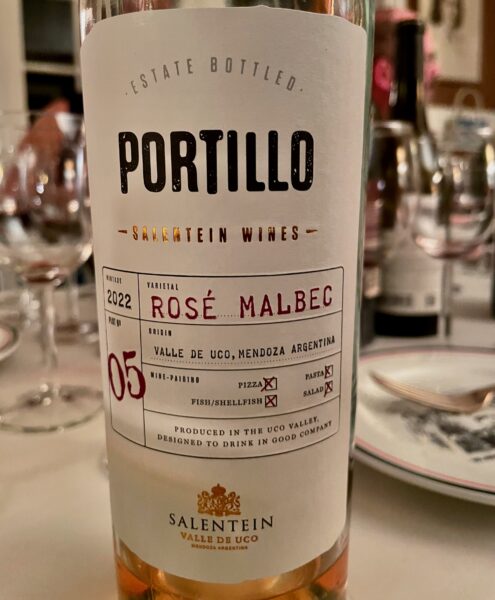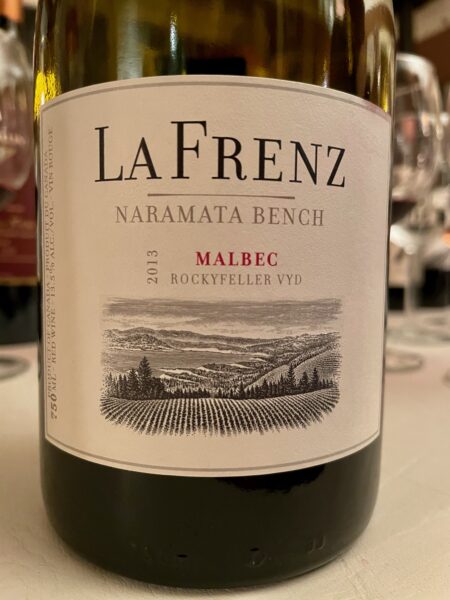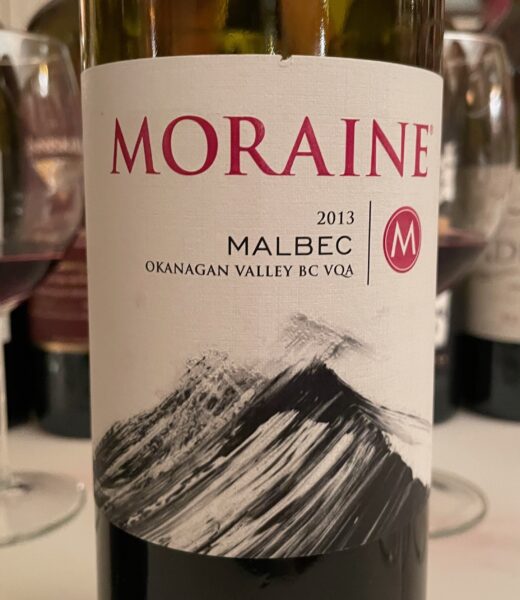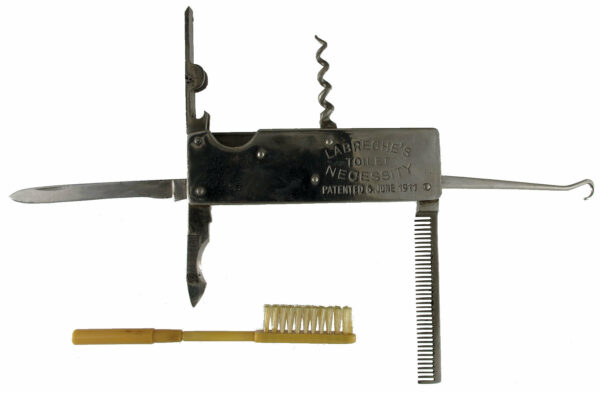When I still lived on the coast, I was part of a wine-tasting group known as the Tasting Ten. This September, I was invited back to fill an empty seat. The session was hosted by Wayne Meadows, one of the group’s co-founders, who likes to remind everyone that the original name of the group was Ten of ’78.
Wayne is a master of preparation—he typically has the next four or five tastings already planned and the wines set aside. Talk about dedication.
When I asked him why he chose Malbec for this flight, he explained:
“(Years ago) I had never really figured out what Malbec tasted like, and to be honest, I’d tried very few. So around 2015, I started gathering bottles for a BC tasting. Then COVID hit—so, fortunately or unfortunately, I ended up with an average 11.5-year-old lineup of BC Malbecs. I have little doubt this was a unique tasting. I was concerned some would be past their prime, but amazingly, they were all just fine!”
A Little Background
Malbec’s story begins in southwestern France, where it was long used as a blending grape in Bordeaux wines. Known there as Côt, it typically played a supporting role alongside Cabernet Sauvignon, Merlot, Cabernet Franc, and Petit Verdot. However, its sensitivity to frost and disease made it not very reliable in Bordeaux’s damp, cool climate, and plantings declined.
The grape found a stronger foothold in Cahors, just east of Bordeaux, where it produces wines known for higher acidity and flavours of tart cherry, black plum, leather, and black pepper. Cahors Malbecs often show a savoury edge, moderate tannins, and lower alcohol, and they generally benefit from a few years of aging.
In the mid-1800s, Malbec crossed the Atlantic to Argentina, where it thrived in the warm, dry, high-altitude conditions of Mendoza. There, it developed a different personality—richer, riper, and more fruit-forward, with plummy flavours and a silky texture.
Today, of the roughly 100,000 acres of Malbec planted worldwide, about 70% are in Argentina, 15% in France, and smaller amounts are found in the United States, Chile, South Africa, Australia, New Zealand, and Canada, where British Columbia accounts for about 150 acres.
High elevations and wide day–night temperature swings (hot days, cool nights) are key for balanced acidity. Because Malbec naturally offers bold, ripe fruit, it generally requires less oak aging than some other red varieties.
What to Expect in a Glass
Typical Malbec aromas and flavours can include blackberry, black cherry, blueberry, plum, cocoa, coffee, leather, spice, and smoke—sometimes with notes of vanilla, tobacco leaf, or mocha.
In the glass, Malbec is easily recognized by its deep purple colour and characteristic magenta rim. Many drinkers appreciate it for having softer tannins and lower acidity than heavier reds like Cabernet Sauvignon.
Malbec in British Columbia
In BC, Malbec has found its niche in the southern Okanagan Valley, where the hot, dry conditions are ideal. First planted in the early 2000s, it quickly showed promise, thanks to similarities between the Okanagan’s climate and Argentina’s mountain regions.
Malbec is highly expressive of its terroir, so regional differences are easy to spot. Grapes grown in the Similkameen, the Black Sage Bench, the Golden Mile, or the Naramata Bench each yield distinct expressions of the variety.
Although Malbec represents only about 2% (2022 figures) of BC’s red grape plantings, more than 40 wineries now produce it—most often as part of Bordeaux- or Meritage-style blends. A few use it for rosé, and over a dozen make single-varietal Malbecs. These wines tend to be full-bodied, with dark fruit flavours of blackberry, plum, and black cherry, accented by spice, smoke, and occasionally chocolate—lush, textured, and food-friendly.
The Tasting
The evening began with a beautiful rosé:

2021 Salentein Portillo Rosé, Uco Valley, Argentina – $17.34*
A lovely, lively start to the night.
The main flight featured the following wines (all tasted blind):
I have included some brief summative comments on each wine.
 2014 Mocojo, Naramata Bench – $31.85
2014 Mocojo, Naramata Bench – $31.85
Good balance, green pepper, leather, dark plum, chalky mouthfeel
People’s overall 3rd favourite

2013 Inniskillin, Okanagan Valley – $25.09
Low acid, prune, black currant, medium finish
8th overall

2013 La Frenz, Penticton (Golden Mile Bench fruit) – $32.95
Astringent, light plum, medium finish, perhaps a little past its peak
One person’s favourite.
9th place

2013 Moon Curser, Osoyoos – $37.95
Very good balance, dark plum, blackberry, long finish—excellent with grilled meats
One person’s favourite.
2nd Favourite

2013 Adega on 45th, Osoyoos – $27.00
Coffee, blackberry, eucalyptus, medium-long, integrated, complex
4th overall

2014 Bench 1775, Penticton – $32.00
Dark plum and cherry, long, chalky, complex finish
7th overall

2013 Moraine, Penticton – $25.43
Garnet-red with medium-deep intensity. A layered, balanced nose; rich and complex on the palate with red and black fruit, leather, and a hint of tar. Medium-plus finish. Nicely aged.
Two people had this as their top wine.
6th overall

2014 Perseus Select Lots, Penticton – $42.54
At its peak, with blackberry and eucalyptus notes reminiscent of Cabernet Sauvignon
Five people liked this one best.
1st overall

2015 Orofino Single Barrel, Cawston (Similkameen Valley) – $45.00
Pleasant nose, some dark fruit and spice, medium finish
Two people’s favourite.
5th overall
The Perseus was clearly the top wine, but sadly, the winery no longer exists. The scores for the rest of the wines were very close overall.
(* Prices reflect purchase date.)
A Final Thought
World Malbec Day is celebrated on April 17—but you certainly don’t have to wait for spring to raise a glass of BC Malbec.

Before we all left, Wayne, a helixophile (corkscrew collector), shared one of the corkscrews from his extensive collection. This ‘Toilette Necessity’ combination corkscrew, comb, brush, and bottle opener dates back to 1911. Back then, many day-to-day items were sealed with corks, so it was important to always have one handy.


“A very rare Canadian patent #: 133,584, 06,06, 1911- by Joseph Charles Augustus Labreche – Joliette, Quebec, Canada. I am only aware of three Canadian patented tools containing corkscrews, ever being found to date. This is one of two of these found to date. The toothbrush has a reversible handle. Either extending the handle or reversed such that it fits over the smaller handle on the brush. It is stored under a trap door above the knife blade.”
Wayne Meadows
(All photos, except as noted – Sam Hauck)
If you are interested in Wayne’s corkscrew collection, read more here:
https://www.vancouverisawesome.com/local-news/this-vancouver-man-has-a-frankly-stunning-collection-of-corkscrews-photos-3766935


Thanks Sam. Always interesting to see how older vintages of B.C. wines hold up. I didn’t realize there were that many wineries making malbec.
Cheers, Brent. I too, was surprised there were that many producers, though after the last couple of winters, it will be interesting to see how much malbec survives. The other big surprise for everyone was how well they stood up. Not one was over the hill.